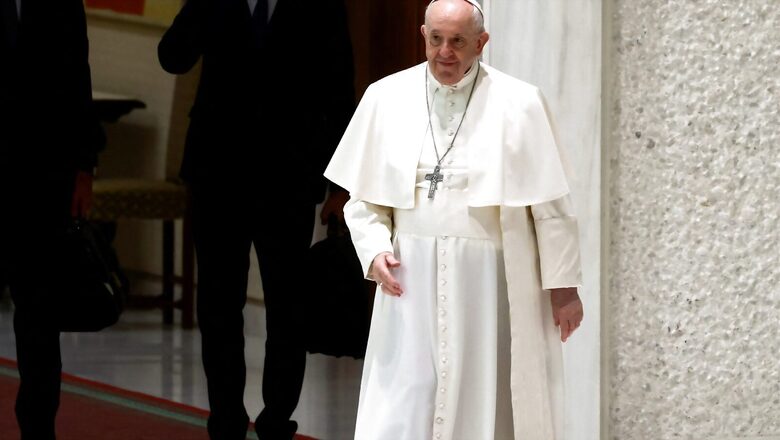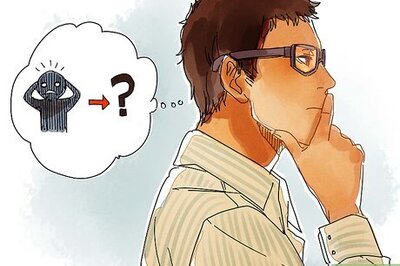
views
Pope Francis on Saturday issued a new constitution, nearly a decade in the making, to govern the bureaucracy that runs the Roman Catholic Church.
The constitution, running 54 pages, newly stipulates that baptized lay Catholics, including women, can lead departments traditionally headed by cardinals and increases institutional efforts to protect minors by incorporating the pope’s clergy abuse commission into the church’s government.
The new text — titled “Praedicate Evangelium,” or “Proclaiming the Gospel” — concluded a process that has, over the years, introduced in dribs and drabs overhauls regarding Vatican finances and the consolidation of Vatican offices. It reflects Francis’ emphasis on a more pastoral and ground-up church, and leaves a concrete mark on the church’s workings.
Reforming the often unwieldy and out-of-touch Vatican bureaucracy, known as the Roman Curia, which governs a church of 1.3 billion faithful, was a central motivation for Francis’ election in 2013.
The document, drafted by top cardinals chosen by Francis, was released on the ninth anniversary of his installation as pope. It explicitly states in its preamble that “the pope, bishops and other ordained ministers are not the only evangelizers in the church,” creating space for Catholic “laymen and laywomen” to have “roles of government and responsibility.”
In another section, called “Principles,” it states that the pope can appoint any Catholic he considers qualified to lead a Vatican office.
Church experts suggested that the departments for bishops, which oversees bishops around the world, and clergy, which deals with the church’s priests, would still require men as leaders because only men could be priests.
The new constitution also places Francis’ abuse commission inside the powerful doctrinal office that often opposed the panel’s recommendations. The new structure, the constitution says, will help the church “protect minors and vulnerable persons from sexual abuse.”
Cardinal Sean O’Malley, the archbishop of Boston and the president of the commission in question, has at times taken the exceptional step against the hierarchy and criticized Francis for being tone deaf and wrong on the issue of abuse. But the cardinal called the incorporation of his commission into the church government a “significant move forward in upgrading the place and mandate of the commission, which can only lead to a stronger culture of safeguarding throughout the Curia and the entire church.”
The constitution, signed by Francis on Saturday and published immediately, and only in Italian, will go into force June 5, replacing the charter “Pastor bonus,” or “Good Shepherd,” introduced in 1988 by Pope John Paul II.
Francis has made a tradition of hammering the leaders of the Roman Curia — usually in a major Christmastime address — for a host of sins, including being enamored with power and status and being far from the faithful.
He has denigrated the Curia hierarchy as a self-important, “ponderous, bureaucratic customs house” plagued by “intrigues of little groups” that placed itself and the priesthood above parishioners, instead of being “shepherds, with the smell of sheep.”
The new constitution tries to codify Francis’ view of the church. It introduces changes to put serving the pope back at the center of the Curia’s mission — “Nothing can be done before the head of the curial institution communicates it to the Roman Pontifex,” it says at one point — as well as serving bishops and supporting the local churches that Francis views as the lifeblood of the faith.
The Vatican offices will continue to be streamlined, but also undergo a new prioritization. After the powerful Secretary of State, top billing will go to the new Dicastery for Evangelization, which combines a previous office for supporting the church in the developing world, and in countries where Catholics are a minority, with another dedicated to rekindling the faith in countries already claiming a major Catholic presence. The new office comes “directly” under the pope, with the assistance of two prefects.
Francis has repeatedly sought to put his pontificate within the continuum of the Second Vatican Council, the landmark meeting of bishops in the 1960s that sought to embrace the modern world.
He has recently cracked down on the use of the old Latin rite in celebrating Mass favored by traditionalists. Francis decided that they were divisive within the church, as they promoted a view that undercut the legitimacy of the modern church. The new constitution’s mission statement for the Dicastery of Divine Worship and the Discipline of the Sacraments says that the office “promotes the sacred liturgy according to the renewal undertaken by the Second Vatican Council.”
Jason [email protected] The New York Times Company
Read the Latest News and Breaking News here



















Comments
0 comment